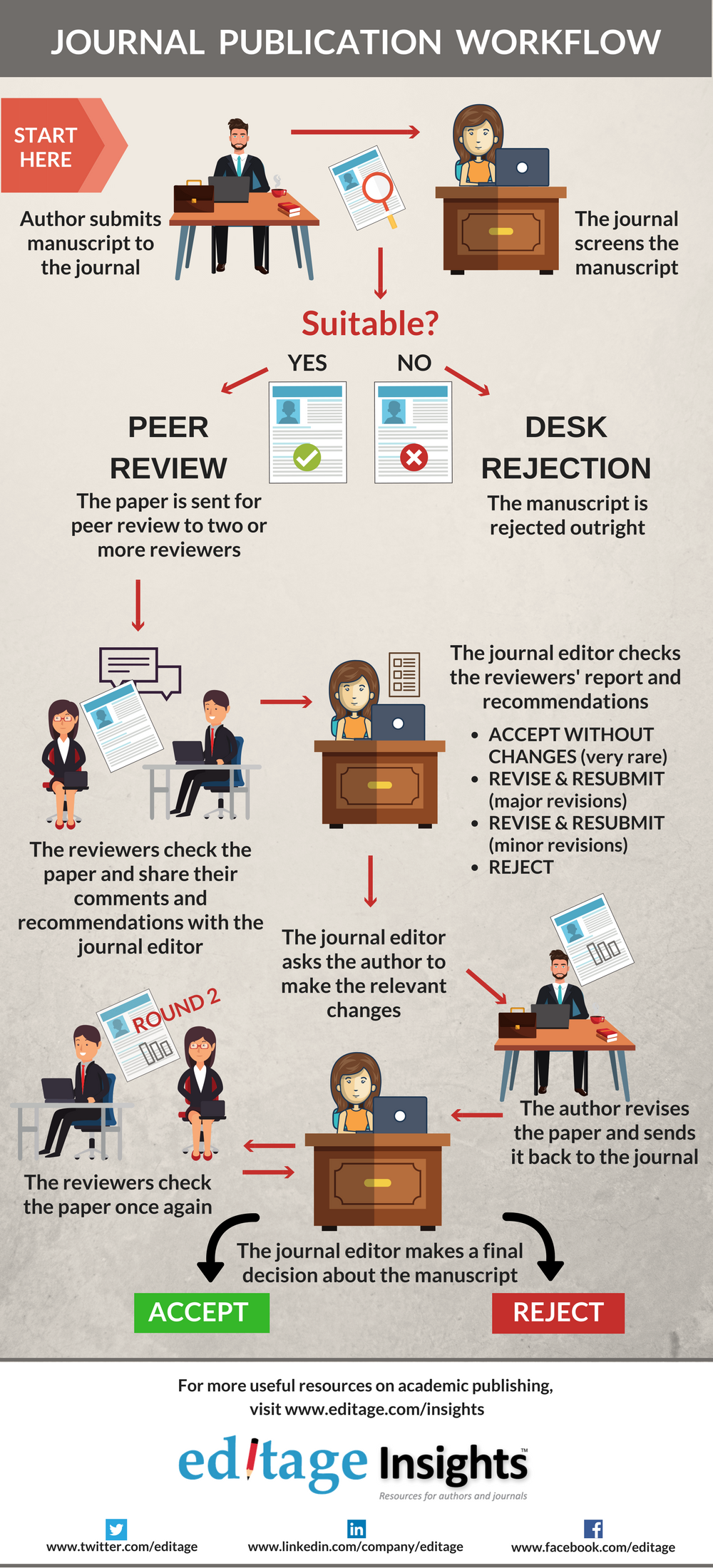
Understanding the publication workflow prior to submitting a manuscript for publication is important so that you know what to expect at each step along your manuscript's journey from submission to published paper. The graphic below, from Editage Insights, illustrates the process for journal articles. The process is similar for academic books.

A wealth of additional information on the publishing process can be found at the following websites.
![]() This guide is licensed under a Creative Commons Attribution-NonCommercial-ShareAlike 4.0 International License.
This guide is licensed under a Creative Commons Attribution-NonCommercial-ShareAlike 4.0 International License.